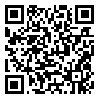BibTeX | RIS | EndNote | Medlars | ProCite | Reference Manager | RefWorks
Send citation to:
URL: http://irje.tums.ac.ir/article-1-202-en.html
Background and Objective: Road traffic injuries are among the most important causes of death and disability in Iran, and the country has one of the highest prevalence of opioid drug use, especially among drivers. The effect of different situations related to opioid use needs great attention. The purpose of this study was to estimate the effect of driving in the withdrawal phase on the occurrence of traffic accidents leading to injury.
Materials and Methods: This is a Case-Crossover study on injured drivers of crashed motor vehicles in Kerman. Drivers having skipped one habitual drug dose within one hour of the driving session were considered as being in withdrawal. We compared the drivers' situation at the time of accident with their regular driving habits.
Results: Among 75 drivers who had history of regular use of opium, 15 were in withdrawal phase at the time of accident. The relative rate of occurrence of traffic injuries while driving in these circumstances was 2.67 (95% confidence interval: 1.52 - 4.68).
Conclusion: According to these findings we can conclude that habitual opioid users are at greater risk of traffic accidents while driving in withdrawal status this risk is more than two-fold relative to not being in withdrawal status.
Received: 2005/07/17 | Accepted: 2005/07/30 | Published: 2013/09/8
| Rights and permissions | |
 |
This work is licensed under a Creative Commons Attribution-NonCommercial 4.0 International License. |





